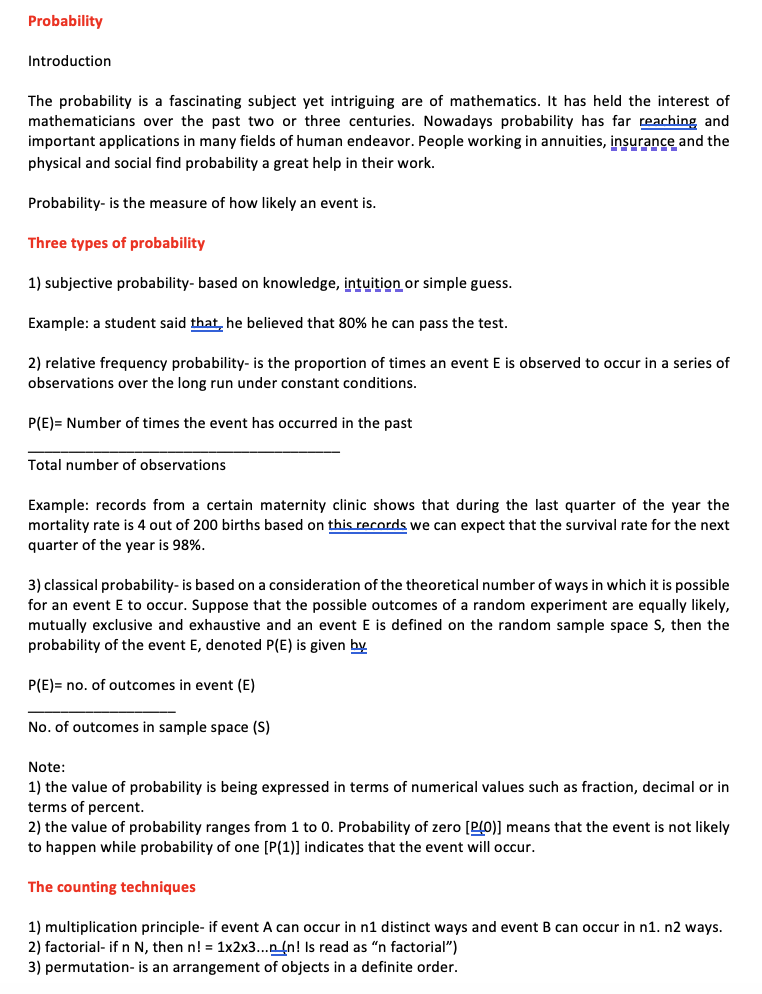Probability in Basic Statistics
Summary:
Probability is a captivating branch of mathematics with applications spanning various fields. It measures the likelihood of events occurring. Three types of probability are discussed: subjective probability (based on knowledge or intuition), relative frequency probability (observed occurrences over the long run), and classical probability (theoretical outcomes). Probability is expressed as a numerical value between 0 and 1, where 0 signifies unlikely and 1 signifies certain.
The counting techniques involve principles such as the multiplication principle (combining events’ possibilities), factorials (e.g., n! for n different ways), permutations (arrangements in order), and combinations (sets without order). Sample spaces represent possible outcomes, while events represent expected outcomes within the sample space.
The Addition Rule calculates probabilities of non-mutually exclusive (P(AUB) = P(A) + P(B) – P(AŪB)) and mutually exclusive (P(AUB) = P(A) + P(B)) events. The Complement Rule states that P(A) + P(A’) = 1. The Multiplication Rule applies to independent (P(AŪB) = P(A) * P(B)) and dependent (P(AŪB) = P(A) * P(B|A)) events.
The provided examples demonstrate calculating probabilities of various events, such as card draws, dice rolls, and shoplifter demographics.
Excerpt:
Probability in Basic Statistics
Probability
Introduction
Probability is a fascinating subject yet intriguing area of mathematics. It has held the interest of mathematicians over the past two or three centuries. Probability has far-reaching and important applications in many fields of human endeavour. People working in annuities, insurance and the physical and social find probability a great help in their work.
Probability- is the measure of how likely an event is.
Three types of probability
1) subjective probability- based on knowledge, intuition or simple guess.
For example, a student said he believed 80% he could pass the test.
2) relative frequency probability- the proportion of times an event E is observed to occur in a series of observations over the long run under constant conditions.
P(E)= Number of times the event has occurred in the past
______________________________________
Total number of observations
Example: records from a certain maternity clinic show that the mortality rate is 4 out of 200 births during the last quarter of the year. Based on these records, we can expect that the survival rate for the next quarter of the year is 98%.


Reviews